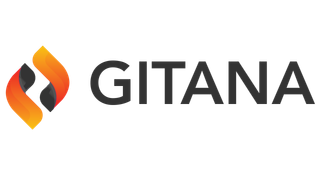How AI Enhances the Content Lifecycle
| About this Article | Published October 23 2025 By Malcolm Teasdale Tags: content platform, ai, rag, content modeling, knowledge management, vector databases |
In the new era of intelligent applications, content isn’t just published — it’s deployed. As organizations move toward Retrieval-Augmented Generation (RAG) systems that blend language models with curated knowledge, the role of a Content Platform becomes foundational.
A Content Platform is no longer just a publishing tool — it’s a data backbone. When integrated with AI, it manages and structures content for machine consumption, not just human reading. This shift turns static assets into dynamic, reusable knowledge that can power chatbots, documentation assistants, and intelligent search.
Let’s explore how AI enhances each stage of the content lifecycle when preparing and deploying content into a RAG environment.
1. Creation — Authoring for Machine and Human Readability
Traditional content creation focuses on human readers. In a RAG pipeline, you must also optimize for machine interpretability (the ability to understand how and why a machine learning model produces its results)
How AI supports content creation for RAG
- Structured Authoring Assistance: AI helps writers produce consistent, semantically rich text with well-defined entities, relationships, and intent.
- Prompt-Aware Drafting: Generate or optimize content for retrieval contexts — concise, factual, and referenceable.
- Terminology and Ontology Validation: AI enforces vocabulary standards to improve retrieval accuracy and embedding quality.
- Multi-Modal Asset Creation: Generate text, diagrams, or imagery, linked and stored within the Content Platform for downstream use.
Example:
A documentation team uses AI-assisted templates to write product knowledge articles with consistent structure and metadata — ready for ingestion into a vector database for chatbot retrieval.
2. Structure — Modeling and Metadata for Retrieval
Structure determines how content is indexed and retrieved. Content platforms already organize content as modular, API-accessible data — the perfect foundation for RAG integration.
AI-driven structural enhancements
- Content Model Optimization: Analyze usage patterns to recommend new entities, relationships, or schema refinements.
- Auto-tagging and Entity Linking: Automatically detect products, people, and features, and tag them for contextual retrieval.
- Semantic Chunking: Break long-form content into optimized segments for vector embedding.
- Metadata Enrichment: Add contextual details like version, confidence, and update timestamps — critical for RAG freshness.
Example:
AI analyzes thousands of documentation entries, chunks them into semantically meaningful sections, and enriches each with metadata before pushing to the RAG index.
3. Governance — Quality, Accuracy, and Version Control
When your content platform powers an AI model, governance isn’t optional — it’s essential. Incorrect or outdated content can cascade into inaccurate model responses.
AI’s role in governance
- Automated Quality Assurance: AI verifies completeness, structure, and semantic consistency before embedding.
- Source Validation: Ensures content is authoritative and approved prior to RAG deployment.
- Version and Provenance Tracking: Maintains traceability from AI responses back to the original Content Platform source.
- Bias and Compliance Checking: Flags content that could introduce bias or violate compliance standards.
Example:
An AI validation process reviews each Content Platform entry before deployment, ensuring that only up-to-date and trusted content is embedded into the RAG index.
4. Delivery — Deploying Content to RAG Pipelines
In a RAG system, delivery means deploying structured, validated content into a vector database or retrieval index, not just publishing to a webpage.
AI-enhanced delivery capabilities
- Embedding Generation: Convert content into embeddings using specialized AI models.
- Vector Index Management: Automatically refresh embeddings when content changes.
- Hybrid Search Integration: Combine metadata filtering with vector similarity for more accurate retrieval.
- Feedback Loop: Capture query performance and feed it back into both content and model tuning.
Example:
When a Content Platform article is updated, an AI pipeline re-embeds the content, updates the vector database, and synchronizes the RAG index — ensuring that responses are always grounded in current, approved information.
A Continuous Learning Loop
When AI and a Content Platform operate together, content management becomes a self-improving knowledge system:
- AI assists in creating structured, retrieval-ready content.
- The Content Platform governs and validates quality.
- RAG systems consume the data and measure performance.
- Insights loop back to refine the content model and editorial process.
This continuous cycle transforms content management into knowledge management — continuously improving and feeding intelligent systems.
In short:
A Content Platform organizes your content.
AI prepares it.
RAG systems deploy it.
Together, they form a living, learning ecosystem for intelligent applications.
